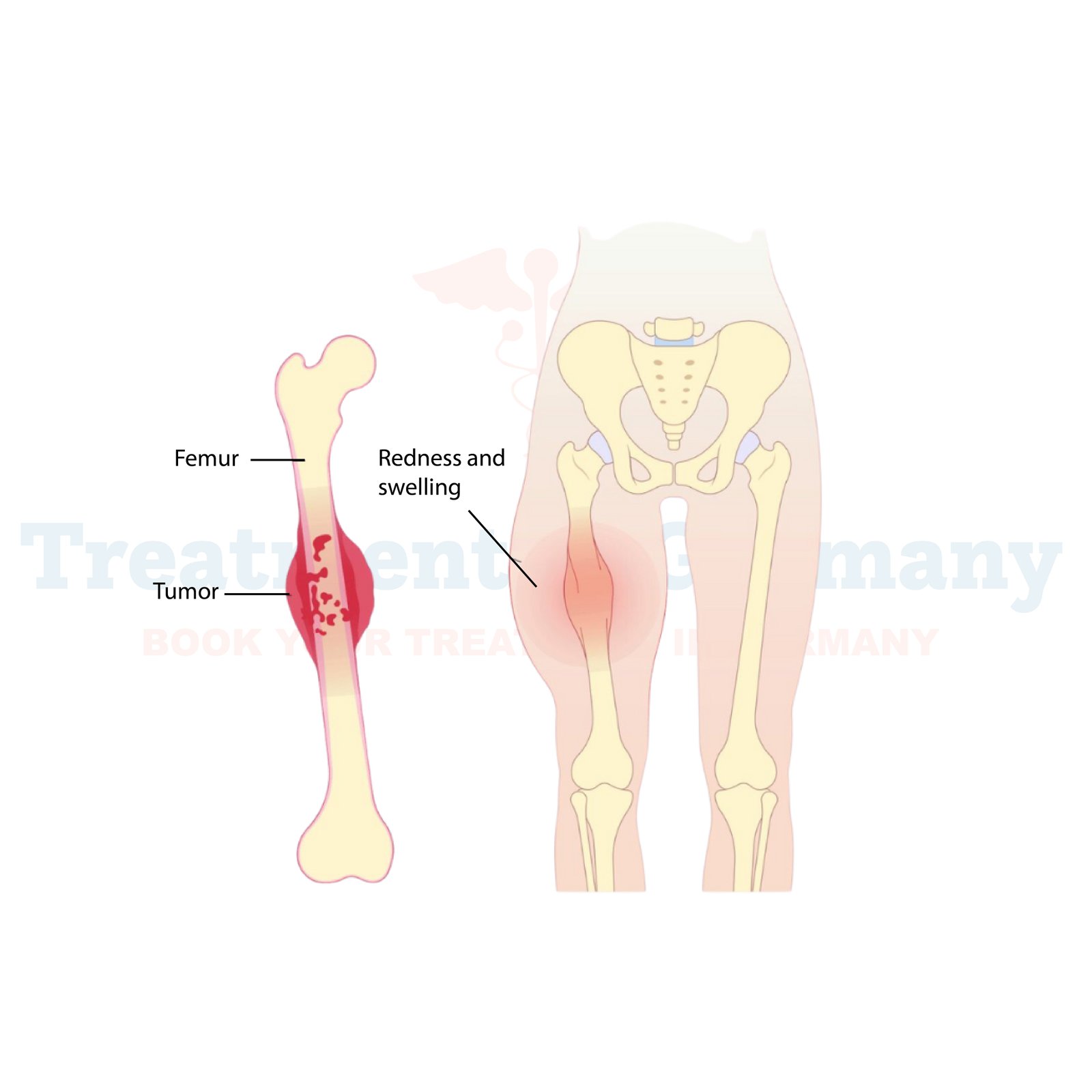Germany is recognized as the most advanced care for sarcoma in Germany, by utilizing advanced technology and well professionalized medical teams. Diagnosis, treatment methods, rehabilitation, and more are discussed in this article on what determines why Germany stands out for cancer care.
Sarcomas are cancers that have their origin from the connective tissues: muscles, tendons, cartilage, and ligaments-bone, blood vessels, and nerves. Sarcomas account for around 15% of childhood diagnosis but only 1% of adult malignancies. These tumors can occur virtually anywhere in the body-from limbs to internal organs-and are divided into bone andsoft tissue sarcomas.
Bone sarcomas include:
The most common age group for osteosarcoma is children and young adults.
These cancers often metastasize or spread to organs like the lungs, liver, or bones, making treatment cumbersome.
Types of Sarcoma
Sarcomas come in various forms, classified based on the type of tissues involved:
At stage four of Sarcoma, cancer generally spreads to other organs like the lungs, kidneys, thyroid, or prostate, which technically makes treatment very challenging.
Diagnosis of Sarcoma in Germany
Germany really excels in the early diagnosis of sarcoma. Modern diagnostic tools include X-rays, CT scans, MRI, PET scans, and biopsies-all are crucial in finding out about the type, stage, and spread of the tumor. The staging of cancer is conducted based on the TNM system for the evaluation of the tumor, node, and metastasis.
Early Diagnosis of Sarcoma
Early diagnosis ensures results are higher, especially if the sarcomas are symptom free in the preliminary stage. The patient should seek medical attention immediately in case of symptoms such as unexplained weight loss, back pain, or persistent lumps.
Germany Treatment Centers for Sarcoma
Germany houses some of the most developed hospitals in the world that provide treatments for sarcoma and a multidisciplinary team of a medical oncologist, radiologist, surgeon, and pathologist. The kind of sarcoma dictates the specific nature of treatment here, so long-term survival with optimal quality care is guaranteed.
Dendritic Cell Therapy
Dendritic cell therapy is a groundbreaking immunotherapy that trains the body’s immune system to target and destroy sarcoma cancer cells.
Hyperthermia Therapy
Hyperthermia therapy is a supportive treatment that enhances the effectiveness of chemotherapy or radiation therapy.
Proton Beam Therapy
Proton beam therapy is a cutting-edge radiation treatment that uses proton particles to target sarcoma tumors with precision.
Targeted Therapy
Targeted therapy focuses on specific genetic mutations or pathways driving sarcoma cancer growth.
Identification and Targeted Therapy of Sarcoma
Identification of sarcoma is supposed to depend on the detailed biopsies and the imaging techniques. Targeted therapy of the tumor aims at focusing specifically on genetic mutations in the sarcoma cells, thus introducing a more personal approach and thereby new modes of treatment for more complex cases like Malignant peripheral nerve sheath tumors and Myxofibrosarcoma.
Rehabilitation after Sarcoma Treatment
After undergoing surgeries or treatments on sarcoma, German rehabilitation centers are required for patients to regain their power and be free from the mental stress of the patient. Amputations or extensive resections with reconstruction of the major portion of a limb require significant rehabilitation to become mobile again.
Psychological Counseling
A comprehensive treatment involves psychological counseling and psycho-social support through social workers to aid patients and families in coping with the psychological stress of sarcoma treatment and recovery.
Expenses for Sarcoma Treatment in Germany
Germany is known to provide patients with advanced treatments for sarcoma at a relatively reasonable cost compared to others around the world. Of course, the costs will vary depending on the medical treatments the patient will have to undergo, such as diagnostic processes and more elaborate treatments like chemotherapy and radiation.
However, through those very treatments, Germany caters to patients' personal medical needs in order to give them high-class care.
Best Sarcoma Treatment Hospitals in Germany
Some of the known hospitals with sarcoma treatment centers in Germany are:
These hospitals, offering very well-tailored care using the latest technology, work on both bone and soft tissue sarcomas.
Why Treat Sarcoma in Germany?
Germany's reputation in cancer care is even advanced through research into the latest techniques, making clinical trials accessible, collaborations of leading oncologists among others.
Why thousands of patients worldwide come to Germany for treatment?
Worldwide patients flock here for:
What are the most common treatment stages for sarcomas in Germany?
Germany treats most types of sarcomas such as osteosarcoma, leiomyosarcoma, chondrosarcoma, and Ewing's sarcoma. The treatment for both bone and soft tissue sarcomas is highly advanced.
What are the diagnostic aids which Germany uses for detecting sarcoma?
In Germany, advanced diagnostics such as X-rays, CT scan, MRI, and biopsy are used in hospitals. These help in the early detection of sarcomas and in more precise treatment.
Is it affordable to treat sarcoma in Germany?
Germany is a high class treatment provider with cost estimates according to treatments needed. Diagnostic tests and chemotherapy etc are also affordable in comparison with other major health travel destinations.
What advanced therapies for sarcoma are available in Germany?
Germany has advanced treatments such as chemotherapy, radiation therapy, targeted therapy, and immunotherapy. These new modalities further enhance outcome results, especially in late-stage sarcomas
Why choose Germany for sarcoma treatment?
Germany is famous for modern technology, personalized care and high survival rates. Its multidisciplinary teams assure full treatment for difficult cases of sarcoma.
👉 Contact us for further information and receive a complimentary consultation.

.webp)
.webp)
 (1).webp)
 (1).webp)


.webp)
.webp)
 (1).webp)
 (1).webp)

